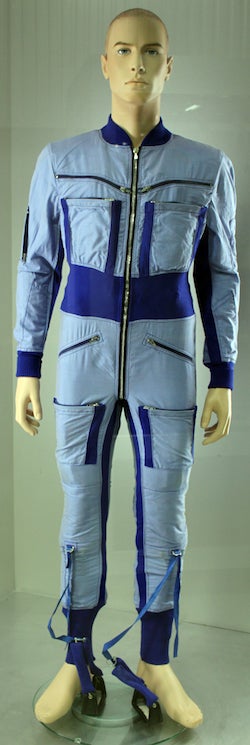This article was published in Scientific American’s former blog network and reflects the views of the author, not necessarily those of Scientific American
The Kokoda Track, in Papua New Guinea, has an important place in the Australian psyche. Walking the 60-mile mountain trail through the jungle in sweltering heat and humidity, is something of a rite of passage for many Australians, linking us to a grim but proud history: during World War II, Australian armed forces fought the Imperial Japanese Army for six punishing months along this so-called “trail of death,” where more than 600 Australian soldiers and over 10,000 Japanese were killed. The perilous terrain claims lives to this day.
So I was astonished when Michael, the father of one of my kids’ schoolmates, spoke during a school assembly about his intention to walk the Kokoda Track with his 6-year-old son, Max. The journey is a tall order for anyone, let alone a child. Especially a child like Max, who has cerebral palsy.
I’m familiar with cerebral palsy from my work as a perinatal research scientist. I study how the environment in utero affects the developing fetus to influence lifelong health. Cerebral palsy is caused by damage to the developing brain before or around the time of birth and affects 17 million people worldwide. Forty percent of kids with cerebral palsy need a walking aid or wheelchair to get around. Max is one of them. Michael planned to carry Max 60 grueling miles along the Kokoda Track was to raise money to help children like his son.
On supporting science journalism
If you're enjoying this article, consider supporting our award-winning journalism by subscribing. By purchasing a subscription you are helping to ensure the future of impactful stories about the discoveries and ideas shaping our world today.
There is no cure for cerebral palsy, but intensive physical therapy can help improve movement. When Michael and his wife, Claire, were investigating treatment options for Max, they thought that something called Therasuit therapy seemed best. This unconventional and as-yet-unproven idea is based around a modified version of the “Penguin suit” worn by Russian cosmonauts to counteract the degenerative effects of microgravity. The Therasuit provides physical support to correct movement during intensive physical therapy sessions—typically three hours a day, five days a week, for three weeks. Many children, like Max, undergo repeated three-week sessions for a year or more.

Russian "penguin suit." Credit: Anagoria Wikimedia(CC BY 3.0)
Therasuit therapy for kids with cerebral palsy can be exhausting—just like walking the Kokoda Track. Michael and Claire were so impressed by the improvements in Max’s mobility after his therapy that they wanted to raise money to provide the treatment for other kids. When Michael spoke at the school assembly, he also mentioned the idea of studying the therapy’s effectiveness.
My admiration for Michael and Claire was immediate and overwhelming. As a parent, I identified with their need for Max to achieve his full potential. Their commitment to helping other children was inspiring and I felt compelled to help.
I became a biomedical researcher to help children. My PhD project was aimed at understanding why small babies are at greater risk of sudden infant death syndrome (SIDS) than normal birthweight children. I now work with researchers to try and improve outcomes for babies born preterm or after exposure to potentially damaging intrauterine conditions. My experiments touch on aspects of brain development and prevention of brain damage, so I have established working relationships with some of the world’s leading cerebral palsy researchers.
Like most biomedical researchers, I conduct studies based on my understanding of biology and my own ideas about what might improve human health. My work is funded mainly by competitive government grants worth millions of dollars that are awarded after peer review. Sadly, we don’t often ask patients and their families what their priorities are, and we rarely work directly with them to address their needs. Michael and Claire realized that a lack of evidence about the effectiveness of Therasuit therapy is a barrier to its wider adoption. As a scientist, I see it as my duty to fill evidence gaps, regardless of who identifies them. My work with Michael, Claire and Max is an exception to the usual business of biomedical research.
After discussions with Michael and Claire, I assembled a team with the requisite skills to study the outcomes of Therasuit therapy. Claire recruited 12 kids, whose therapy would be paid for by the family’s fundraising. We identified a suitable study design and valid measurement instruments (the Gross Motor Function Measure and Pediatric Evaluation of Disability Inventory) to compare children’s movement before, during and after a 12-month course of treatment. The project is essentially a pilot study to establish whether a larger randomized trial is warranted and feasible.
My background has lent legitimacy to the project and attracted critical interest and assistance from other expert researchers. I found myself on the phone one evening with the Australian minister for health. As a consequence, the government recently committed $2 million for cerebral palsy research, including our Therasuit study.
We will complete the final assessments of the 12 participants in our study early next year. I can’t yet say what the study’s outcomes will be, but I can say this: Although I’ve published more than 100 scientific papers, I’m particularly looking forward to the first one that will be co-authored by family members of the very people who stand to benefit from the research.
Max and Michael completed their walk of the Kokoda Track late last year. Max has since undergone more Therasuit therapy. In September, I saw a video of him walking independently on the beach. Although we only recently started this very different journey together, we have already come a long way.